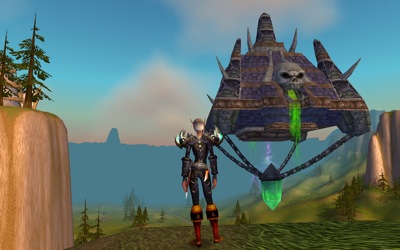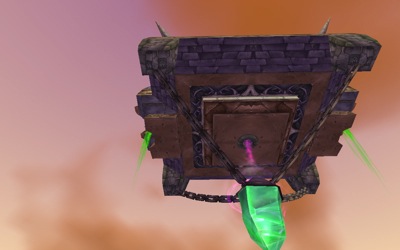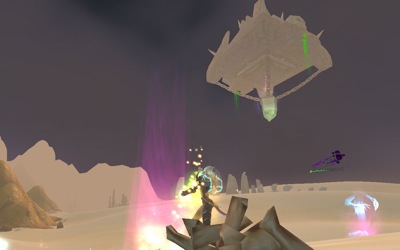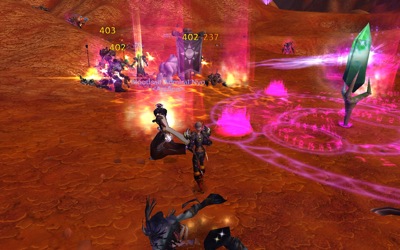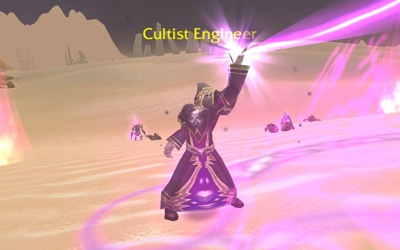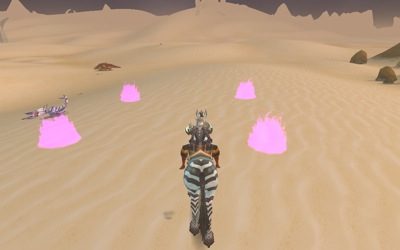I'd hoped to write about the present state of affairs in Azeroth and Outland first, but it doesn't work. Current affairs in the Warcraft universe are tightly bound to its fundamentals. On the whole this is a good thing, I think—the nature of the world should matter—but it means that you have to go to Bible school before you can profitably read the Sunday paper.
There are countless worlds in the Warcraft universe, each with its own solar system or something equivalent. They're separated by the Twisting Nether, an unbounded chaotic space in which everything's up for grabs. Normally, both physical and magical barriers keep inhabited places separate from the Nether. When they don't, things tend to get ugly, with raw tendrils of arcane force, the equivalent of solar flares, beating down on the surface and just about anything wandering out of the Nether in search of food. When Draenor got mostly blown up, the surviving fragments—what people in game now call Outland—were left exposed that way. It's very pretty, but it's not safe:
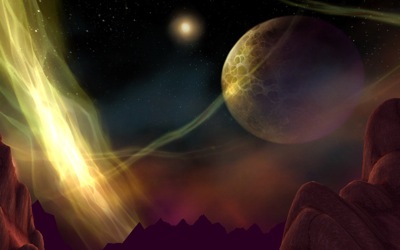
Originally the world of Azeroth didn't have organic life. It had elementals:
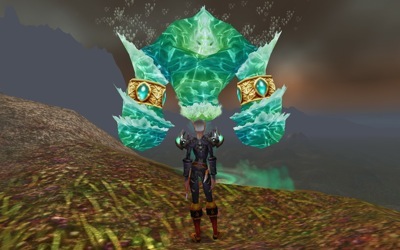
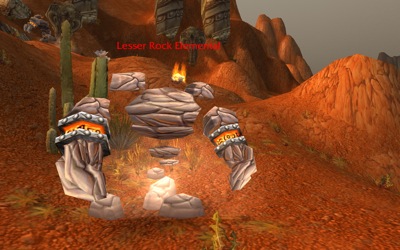
Their activities were presided over by the Old Gods. This is the mortal (?) remains of one of them:
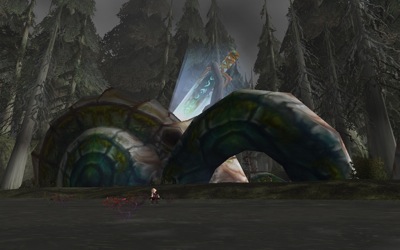
There's a little pink splotch just left of center, in front of the tentacle. That's a gnome, and maybe give a sense of scale. The sword in the thing was wielded by one of the Titans, who arrived on the scene some unknown time after the elementals and Old Gods had gotten established. The Titans are out to bring out the full potential of every inhabitable world, and to make more. (It's a good thing they're immortal.)
They cut imposing figures. This is one of their servants; to get the sense of a Titan, scale it up so that she can pick up that sword seen above:
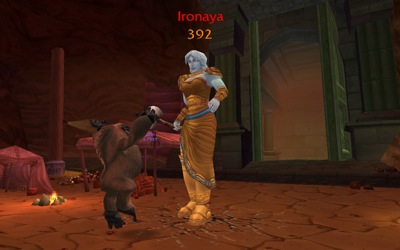
The Titans fought the Old Gods and elementals for a very long time, and finally won. The Old Gods were killed and/or banished. (One has since woken up, but no screen shot of it, since I've never been to see it in game.) The elemental lords were banished as well. Life as we know it got underway.
Unfortunately, all was not well. One of the Titans, Sargeras, succumbed to despair at the magnitude of his people's chosen task. So many worlds, so much opposition...in the end he snapped and decided to unmake the whole show. He built an army, the Burning Legion, to help in the task. He corrupted entire races (or their majorities, at least) into its ranks, smashed his way through things. This is Socrethar,one of the eredar, among his most powerful followers, and yes, this screen shot was taken from Tivara's normal eye level:
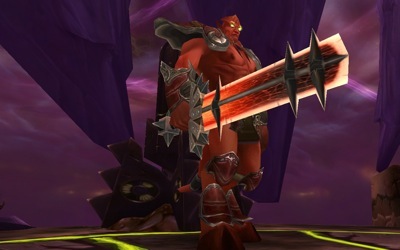
Azeroth proved an unusually tough nut to crack. But that's going to be a post of its own.
I really, really like the mix of forces at work here. The Old Gods lend a nicely Lovecraftian touch to things, and that corpse out there in the game world is a wonderful touch. "What's that?" "Looks like a god with a sword through its head. Don't encourage it." The elemental lords come across as just plain alien, sliding from comprehensible concerns into the purely mysterious and back again. And as I've commented before and will again, Blizzard does epic scale so amazingly well: the great demon lords have a physical presence to match their master's epic despair and rage.
Next time, the forces native to Azeroth's organic phase, energy fields, and more. Probably also the return of the elementals and Old Gods.
